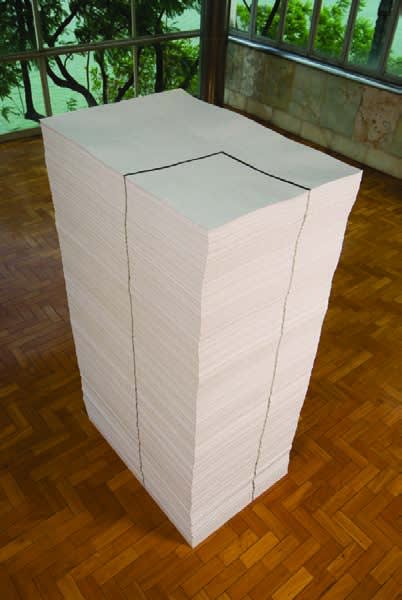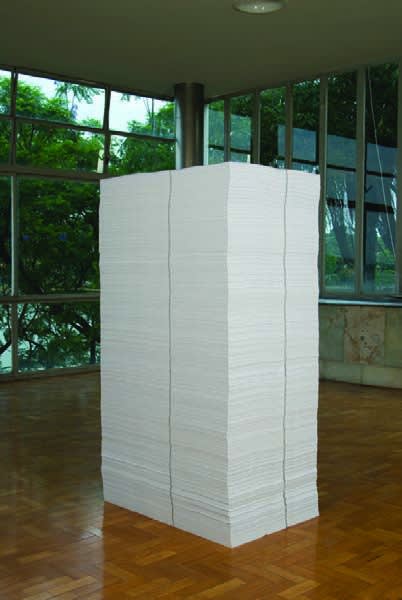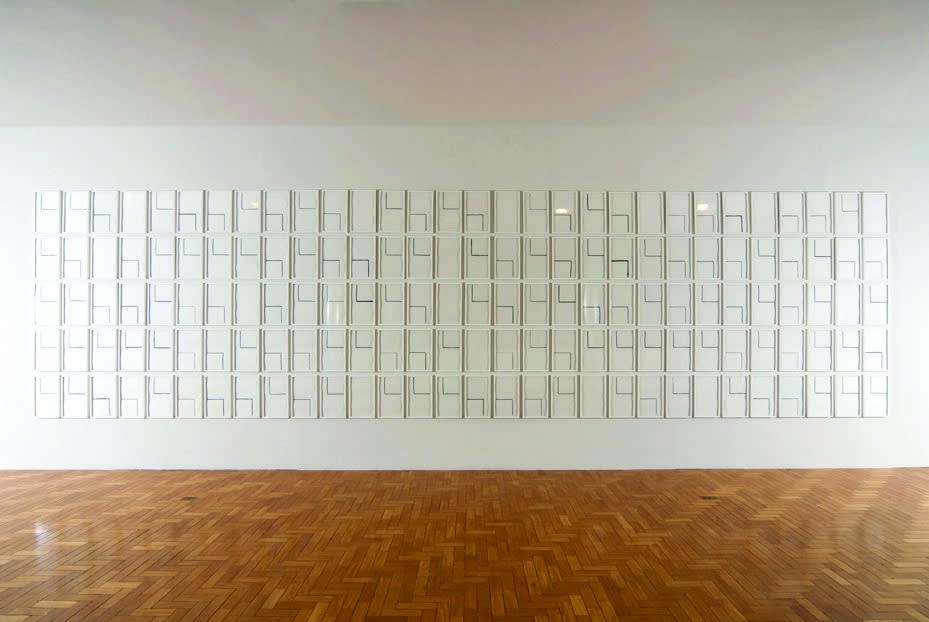Isaura Pena draws with water. Long washes are applied to the paper in a persistent and continuous exercise of overlapping lines and gestures. The white surfaces are stained by the black of the paint and water, which settles into their spaces and penetrates the textures of the paper. The paper grain that receives the liquid needs time to melt. The charge of color or tone is created from the addition of pigment, the liquid ink – India ink – spills onto the paper little by little, acquiring corporeality and weight. But you have to wait for the next step – apply, dry, apply. The long spaces between one operation and another mark the time of each job. Here time and space merge. Just as the forces of nature build the landscape, Isaura Pena draws. When we come across elements of nature, we rarely remember their construction process. Mountains and mountain ranges are formed from sediments that accumulate over years, centuries and millennia. The addition of small sources of water that flow from the springs tear the land, expand, occupy spaces, and form rivers. Time is a condition for natural events or for the plastic advent in Isaura's drawing to exist.
Addition, accumulation, repetition – the same gesture recorded on the paper, creating a mass of 11,500 sheets of stacked paper. The drawing/object/engraving made in offset does not have the watery fluidity of the smudge superimposition drawings. The sheets of paper placed one on top of the other, above our horizon line, do not allow us to see the drawing, however, the stacked sheets form a solid with the presence of a line on their back. Is a straight line a sequence of points? The straight line, generated by the superimposition of the same drawing, contrasts with the gesture that originated it, organic and liquid matter. What is planographic becomes volumetric.
The monochromatic shapes that Isaura uses in her drawings are rhythmic when repeated, giving value to the blank spaces on the paper. Seriation and autonomy are present in this work, made up of 150 fragments of the same shape constructed by the black line that rotates in space. What was repetition thickens, takes on body.
Rarely have nature and construction been so close. The rest is silence.
Marconi Drummond (Curator), Fabíola Moulin (Visual Arts Coordinator)




